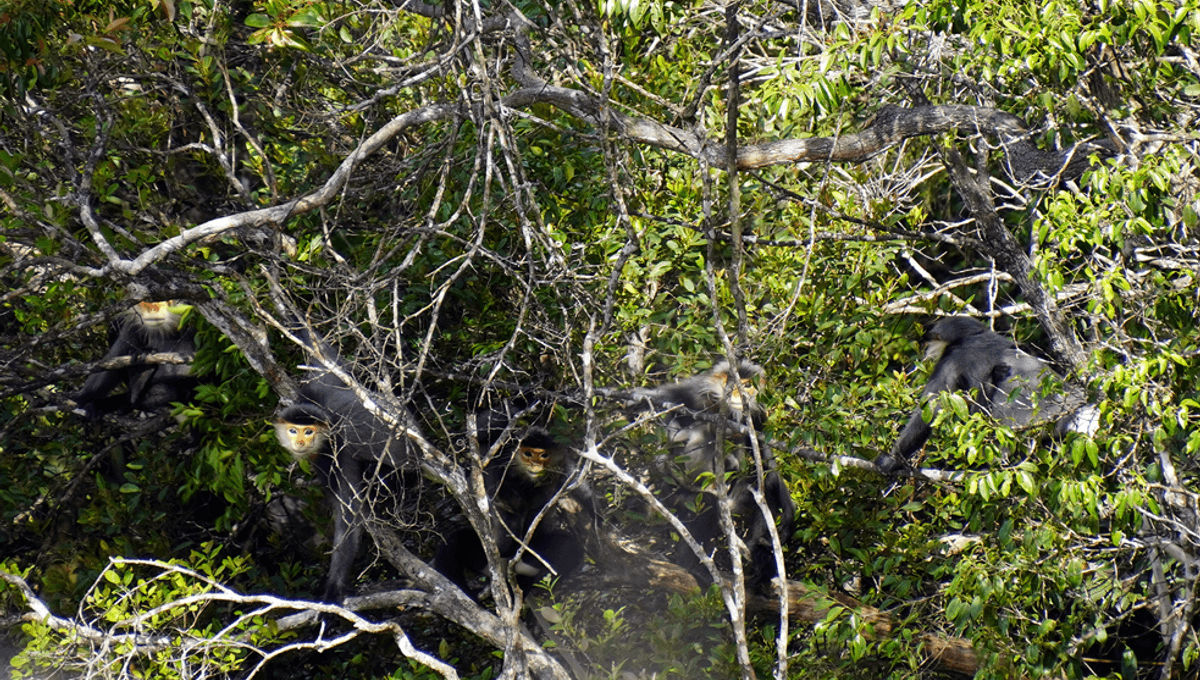
With a recorded total population speeding towards fewer than 2,000, the critically endangered gray-shanked douc langur (Pygathrix cinerea) is one of Vietnam’s rarest primates – but the discovery of a new population in the country’s central highlands has brought hope that there could be more out there.
The previously unknown group was found in Khe Lim Forest, in the central province of Quảng Nam, an area well known for its biodiversity. Initially seen within a high-altitude patch of the forest, further surveys with local communities revealed that the new group – which consists of one adult male, two adult females, two subadults, and two juveniles – had been spotted in multiple locations.
On the surface of it, this is a positive finding. “The discovery of a new population in Khe Lim Forest suggests that additional populations of grey-shanked douc langur may still exist in other unsurveyed forest areas,” write those behind the discovery, a potential glimmer of hope for a species with dwindling numbers.
But the good news doesn’t come without concerns; like 50 percent of the gray-shanked douc langur’s existing habitat, Khe Lim Forest isn’t formally protected, and the area acts a bit like a snapshot of some of the threats that the species faces when this is the case.
Deforestation, leading to habitat loss and fragmentation, is one of them. Two of the areas in which the primates were found in Khe Lim are “significantly affected by ongoing road construction,” write the researchers, and according to the IUCN, such activities lead to the loss of nearly 10,000 hectares of their habitat country-wide each year.
Another significant threat is hunting, with gray-shanked douc langurs captured for meat, traditional medicine, and the pet trade. “During our fieldwork, we observed several terrestrial mammals caught in snares, suggesting ongoing trapping and hunting activities in the area,” report co-author Tay Van Nguyen told Mongabay.
This isn’t the first time that new populations of the critically endangered species have been discovered. Back in 2016, a survey led by conservation charity Fauna & Flora found 500 of the langurs in one Vietnamese province alone – but nearly 10 years later, the weight of the threats against them remains.
So, what can be done in light of this latest news?
“We recommend a comprehensive survey of the entire Khe Lim Forest, and enhanced outreach efforts with local communities in the buffer zones,” suggest the report authors. “This approach will help establish conservation measures to protect other unknown, isolated populations of the grey-shanked douc langur.”
The report is published in Oryx.
Source Link: New Group Of Critically Endangered Douc Langurs Found Hidden In Vietnam Highlands